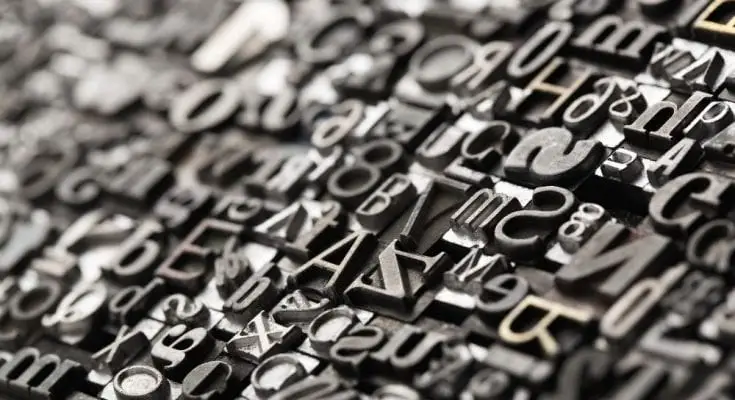Letterpress is a relief-type of printing that leaves a literal, lasting impression upon paper via metal engravings. Though it has recently gone through a raging resurgence, the technique itself is fairly long-established.
Matter-of-fact, letterpress comes from a long-stem of centuries and is deeply rooted in historical significance. Let’s take a closer look at how this standard printing practice became the charming artform we know it as today. Here is a brief history of letterpress printing.
The Invention: The Modern Printing Press
A long time ago, in the early centuries of our world, the Chinese utilized a woodblock technique to form print onto wax paper. If we fast-forward a bit to a time closer in history (1440), a man named Johannes Gutenberg created a less painstaking process via the invention of the modern printing press.
After years of work and secrecy, he came up with type pieces made out of metal that he framed into a device. He lathered ink onto these steel letters (with his own concoction of ink) and applied pressure to apply the letters to a piece of paper below.
This early form of the printing press brought into existence the possibility of mass book production. People used the process for many years with minimal change in design. Due to the newfound ability to print quickly and adeptly, fresh ideas, concepts, and ways of thinking took root in the world.
The Movement: Creating Contemporary Industries
Next up on a brief history of letterpress printing is a change of movement in the industry.Right before the 1800s arrived, lithography printing stole the spotlight by improving the process initially formed via Gutenberg’s press. This style of printing produced an easier, affordable process that could fit an entire page of paper on a singular printing plate.
Letterpress still moved forward due to the Industrial Revolution, but lithography revolutionized the world. Improvements in lithography machinery created linotype, a form of single-line casting, which boomed in the newspaper industry. This fabled technology is now of the past, but linotype machines were the industrial power behind factories and newspapers for over a century.
The Revival: Latter-Day Letterpress Uses
While publishers almost ruled letterpress obsolete a few decades back, today, consumers and artists far and wide are enraptured by the allure of hand-type sets. These days, anyone can print digitally, but the process of letterpress printing has a unique quality and tactile feel unlike anything on the current offset market.
Without the perpetual advancement of printing techniques, we wouldn’t have all the incredible modern printing finishes that impact a print project’s tangible designs. Commercial printers can use original letterpress techniques or modern letterpress printing techniques commonly known as debossing. This printing finish leaves deep impressions on printing materials and manifests itself into a stunning, elegant work of art sure to catch the eye.
Additional Resources:
Bing
Telegram
How To Write An Instagram Bio
Twitch



